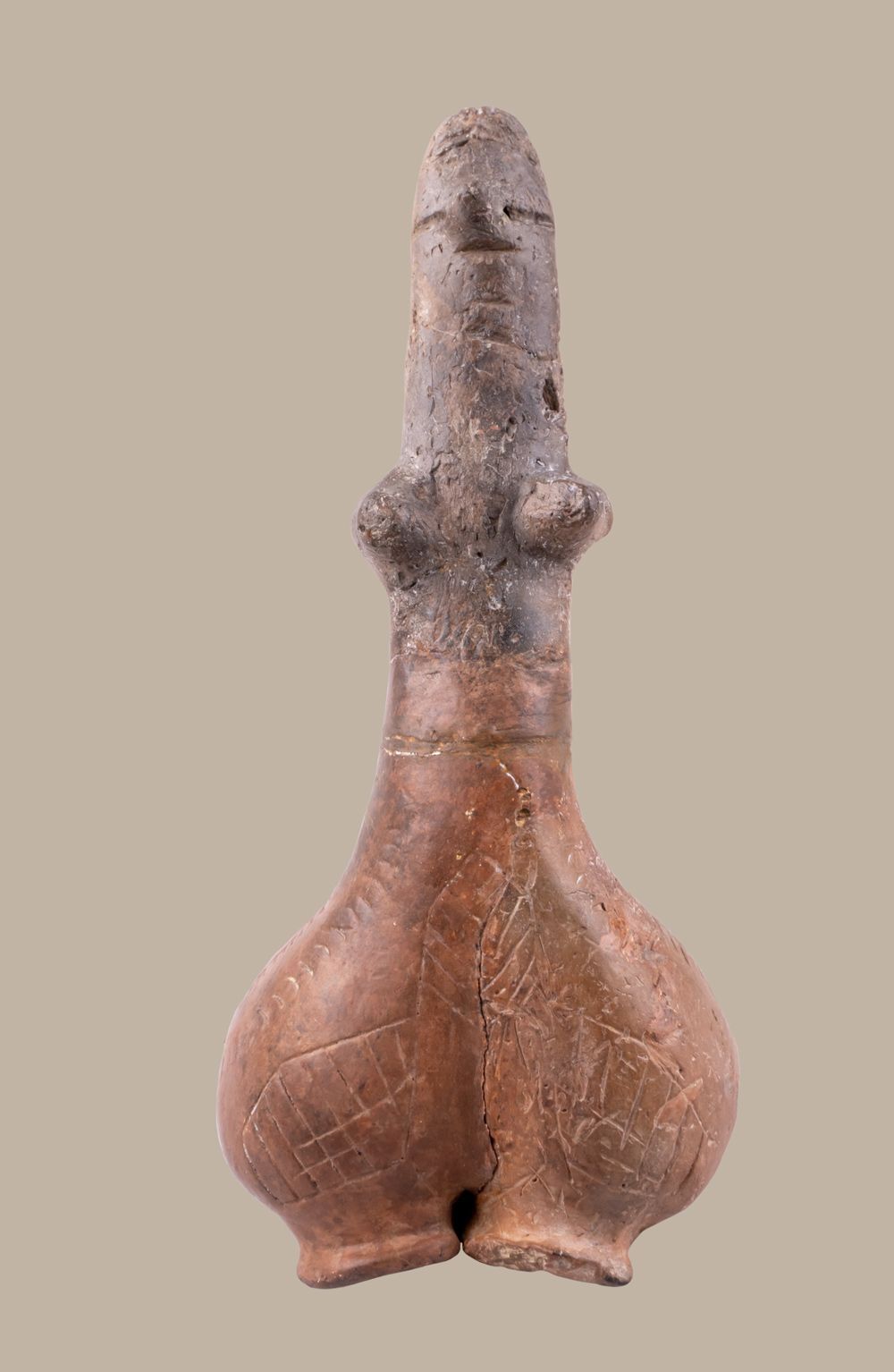Two fragments of a phallic-body clay statue depicting a fat-timbered woman: an upper body and a lower left body. Both parts of the idol were found from different pits, further apart, during the excavation of János Makkay in 1978 at the Endrőd-Sujókerszt site. The nose of the statue is pointed, its eyes and mouth are indicated by a horizontally incised pattern, while the female principles are symbolized by an incised line and an overlaid plastic bulge. On the forehead, head, neck and back there is a long, curly, red dye-depicted hair, while the buttocks and thighs are decorated with an engraved geometric pattern.
About 9000 years ago, there appeared a population who represented what we call the Körös Culture in this area. These people came from the Balkans, and brought the greatest innovation of their times – agriculture. Compared to the fisher-hunter-gatherer lifestyle pursued before in these lands, this represented a real breakthrough. The grain crops could feed much larger numbers of people, and even support domestic animals.
These changes transformed people’s lives. The population grew, and new technological improvements spread – polished stone tools became more sophisticated, and fired pottery was invented. In addition to animal hides, woven fabrics also gained ground in clothing. Instead of dugout sheds, wattle-and-daub houses became common.
These transformations deeply influenced the belief system as well. Fertility cults came to the fore among human beliefs, which better expressed people’s attachment to the cultivated land, the weather, and Mother Nature in general.
The figurine standing in the center of this room is a true embodiment of this religious mindset. Researchers think that these kinds of statuettes were goddesses. According to some, their simplified form symbolized the unity of the masculine and feminine polarities. Several thousands of so-called steatopygous /ˌstɪəˈtɒpɪɡəs/, or fat-bottomed, idols were found across Inner Asia throughout the Carpathian Basin, clearly indicating the great prevalence of this culture and belief system. The figurines took their name from their enhanced lower body. Pieces of this statuette were found in different pits, far from each other; it is thus nearly certain that it was intentionally shattered and buried in different holes dug in the ground. The idol’s nose is pointy; its mouth is symbolized by a horizontally incised pattern, while the female features are indicated by both incised lines and appliqués. Red traces of long locks of hair fall all over the forehead, top of the head, neck, and back, while its bottom and thighs were incised with geometrical patterns.
Typical everyday objects of this period are on display in the showcases on the right-hand side wall. These include agricultural instruments, like an antler hoe and the stone inserts of a sickle; polished stone axes, minerals taken from distant places and bone tools, such as spoons, prickles, and needles; as well as altars and zoomorphic and anthropomorphic figures characteristic of the belief system.
zengo.theme.szarvasmuzeum::addon.kiallitasok_featured_item

zengo.theme.szarvasmuzeum::addon.kiallitasok_excited_things
Szarvasagancs felső részéből készült: az egyik külső ág az eszköz száraként, nyeleként, míg a másik ütőfelületként szolgált. A felső rész mindkét vége megmunkált, a többi ágakat leválasztották. Az eszköz másik végénél kopás-, illetve használatra utaló nyomok láthatóak, de feltételezhető, hogy mindként ütőfelület használatban lehetett.
Sivohnedá, ručne tvarovaná hlina, štvornohá sviečka, oltár. Zostala iba dolná pätka kužeľovej misky. Medzi mierne rozprestreté dolné končatiny sú boky rozdelené 4-4 oblúkovými prehĺbeninami. Undecorated.